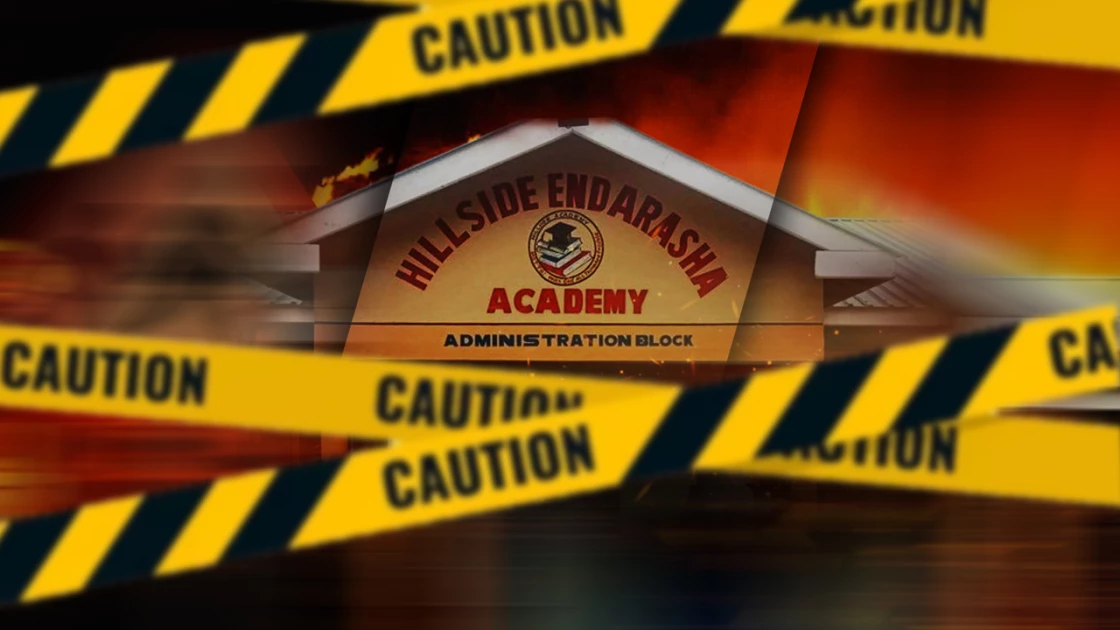The Endarasha tragedy and call for systemic change in disaster preparedness

Petitioners including the Kenya Human Rights Commission (KHRC), David Karani, and the Elimu Bora Working Group, insisted that the school rushed to reopen without implementing critical safety measures. The legal battle has revealed deep cracks in Kenya’s school safety protocols, laying bare a much broader crisis. The fire tragedy at Hillside Endarasha Academy was more than just a devastating event—it was a stark revelation of systemic failure and neglect in ensuring school safety.
The court, recognizing the urgency of the matter, issued a conservatory order forbidding the reopening of the boarding section, pending further safety and structural integrity reports. As the legal battle unfolds, it exposes a much deeper crisis that reflects on Kenya’s educational safety standards and disaster preparedness.
The Hillside Academy tragedy is not an isolated event but rather a painful symptom of broader systemic issues, including poor compliance with safety regulations, insufficient disaster management protocols, and a lack of psychological support for survivors.
Failure in Fire Safety Preparedness
James Oloo, an Occupational Safety and Health expert, explains that a hazard is any situation with the potential to cause harm, such as a lack of fire safety equipment and protocols, which was a glaring issue at Hillside Academy.
"The risk is the likelihood of that hazard causing harm." In the case of Hillside, the lack of proper safety measures transformed a hazardous situation into a full-blown disaster,” he states.
When the fire broke out, there were no systems in place to mitigate the damage. Emergency exits were either inaccessible or non-existent, and there was no fire safety equipment to manage the flames. The outcome was tragic—21 children lost their lives, not just to the fire but to a system that failed to protect them.
In the aftermath, government officials presented food donations to the grieving families, a gesture that critics argue did little to address the root causes of the tragedy. Professor Herman Manyora pointed out that the government’s focus on immediate relief, such as rice and beans, was a superficial fix that ignored the real issues: inadequate disaster preparedness and poor safety management in schools.
"The lives lost at Hillside Academy weren’t just because of the fire. They were because of a complete lack of safety systems designed to prevent such a disaster," Manyora stressed.
This approach underscores a broader issue within Kenya’s government—tackling problems with temporary solutions rather than implementing long-term reforms. Instead of food donations, Manyora argued that the government should have prioritized comprehensive safety audits of schools across the country and ensured that fire safety protocols were in place.
Safety and Structural Integrity Under Scrutiny
Before Nyeri High Court, petitioners argued that Hillside Academy was not ready to house students again and that the rushed reopening was a dangerous move. The court responded by certifying the petition as urgent, recognizing that the safety and health of children were at risk.
The court also directed the school and other relevant respondents to file detailed health and safety reports, as well as structural integrity reports, before the school could consider reopening its boarding section.
This legal move highlights the need for strict compliance with safety laws, particularly in learning institutions where young lives are at stake. It also shines a light on the inadequacies in school infrastructure, particularly in rural areas, where safety standards are often compromised due to lack of resources or oversight.
Kenya has clear fire safety laws, including mandatory annual fire drills under Section 23 (1) of the Fire Risk Reduction Rules, 2007. However, the Hillside Academy fire revealed a significant gap between these legal requirements and their practical implementation.
According to Oloo, many schools are unaware of how to use basic fire safety equipment, such as extinguishers and hose reels.
This lack of practical knowledge is a critical issue that needs to be addressed. While schools may be aware of the rules, many are ill-equipped to enforce them, either due to lack of resources or proper training. Oloo emphasizes the need for a shift in focus from mere compliance to fostering a culture of safety preparedness and response. This shift would require not only government intervention but also active involvement from school administrators, teachers, and the broader community.
Addressing the Trauma
While immediate relief efforts like food donations provided short-term comfort to the grieving families, the long-term psychological impact of the tragedy remains largely unaddressed. Nyamisa Chelagat, a psychologist from Kumbi Trace, emphasized the importance of integrating mental health support into disaster response efforts. “The trauma experienced by the children and families is deep,” Chelagat said, recounting the story of a 13-year-old girl who expressed a strong desire to leave boarding school after the fire.
Chelagat argued that while physical safety is paramount, emotional and psychological support must also be part of the disaster recovery process. This includes providing ongoing counseling for survivors, many of whom may experience long-term effects such as anxiety, fear, and post-traumatic stress disorder.
The Hillside Academy fire serves as a wake-up call for Kenya to adopt global best practices in disaster preparedness. Japan, a country known for its stringent safety standards and disaster preparedness drills, offers valuable lessons. In Japan, regular drills and community emergency response teams (CERTs) are integral to managing crises effectively.
Kenya could adopt similar practices by introducing regular safety drills in schools and establishing community response teams to enhance local resilience. Additionally, investing in advanced early warning systems, like those used in Japan for earthquakes and tsunamis, could significantly improve Kenya’s disaster response capabilities, especially in regions prone to natural disasters.
Strengthening building codes and ensuring that all educational institutions meet minimum safety standards would also go a long way in preventing future tragedies. Moreover, improving emergency communication systems, particularly in remote areas, would ensure that critical messages are transmitted without delay during emergencies.
Call for Systemic Change
The government’s response, while well-intentioned, has largely been reactive, focusing on short-term fixes rather than addressing the root causes of the disaster.
It is essential for the government, educators, and communities to shift from a reactionary approach to a preventive one. This includes investing in comprehensive disaster preparedness programs, improving school infrastructure, and integrating psychological support into the recovery process. Kenya’s children deserve a future where their safety and well-being are prioritized, and that requires systemic change, not just symbolic gestures.
The tragedy at Hillside Academy serves as a turning point—a call to action for a safer, more resilient future for all children in Kenya. By learning from this disaster and implementing long-term solutions, Kenya can prevent future tragedies and ensure that its schools are safe havens for learning, not sites of potential disaster.
During the most recent UPR cycle (2022), Kenya received specific recommendations regarding child safety, emphasizing the need for systemic change and enhanced accountability in protecting children from abuse and ensuring their well-being. The government has started vetting schools to ensure adherence to the regulations on safety.
Want to send us a story? SMS to 25170 or WhatsApp 0743570000 or Submit on Citizen Digital or email wananchi@royalmedia.co.ke
Comments
No comments yet.


Leave a Comment